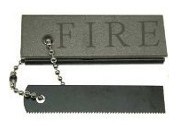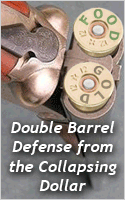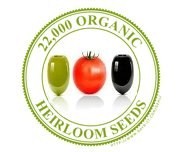 As a prepper, better food storage is something always worth looking out for. Even though the root cellar was overshadowed by the refrigerator, this certainly isn’t a confirmation of the refrigerator’s superiority over underground food storage. Sure, the refrigerator fits in your kitchen and features a sleek design, but the root cellar does the same job naturally.
As a prepper, better food storage is something always worth looking out for. Even though the root cellar was overshadowed by the refrigerator, this certainly isn’t a confirmation of the refrigerator’s superiority over underground food storage. Sure, the refrigerator fits in your kitchen and features a sleek design, but the root cellar does the same job naturally.
Cellars are perfect for food storage, because the temperature is cool and the humidity can be controlled, no matter where you are on earth. Even in extreme environments (very cold or very hot), a root cellar will work to keep your food supply fresh.
Although root cellars can be expensive to build, for preppers, the benefits far outweigh the cost. Listed below are just a few reasons why taking your food supply underground may be beneficial.
1. If the electricity goes out, your food won’t have to be tossed out: Weather and energy emergencies that cut out electrical power for longer than four hours can leave your refrigerated food spoiled. This means that everything will have to be thrown away and replenished, once the power comes back on. A root cellar always stays at a constant temperature that is just above freezing, and unless it becomes flooded, keeps your food supply fresh and safe during most natural disasters and emergencies.
2. More storage space: Your refrigerator and kitchen pantry can only hold so much food. Preppers often keep up to a year’s supply of food on hand, and this can take up a lot of space in the house. A root cellar can be built to any size and can store just about any food item that doesn’t need to be kept frozen, so a lot of kitchen and home space can be freed up by building a root cellar for your supply.
3. They can be built anywhere: Root cellars can be built into basements, under porches, into the side of a hill and even above ground (if you live on rocky terrain). In addition, cellars can be built out of all natural materials, such as stone, wood and sod.
4. They can be used as shelters: If you live in an environment that is prone to tornado weather, you can use your underground root cellar as a shelter.
5. Reduces the need for canning: Root cellars extend the shelf life of most garden fruits and vegetables, reducing the need for canned foods all throughout the winter months. This is not only a time saver but is also healthier for your diet, as some canned foods contain salt or sugar and deplete the nutritional value of fruits and vegetables.
6. Great for seed storage: If you maintain your own garden, you can save your seeds by storing them in your root cellar. The cool, dark environment is optimal for seed storage.
To learn how you can build your own root cellar, check out the link below. There are also many books available on the topic.
- How to Build a Root Cellar for Food Storage, by Greg Roberts.
Susan Wells is a freelance blogger who enjoys writing about automotive and health news, technology, lifestyle and personal finance. She often researches and writes about automobile, property and health insurance at www.insurancequotes.org helping consumers find the best online insurance quotes. Susan welcomes your comments and questions below!
Picture Credit- Food Storage as Grandma Knew It New York Times Magazine
























It is really the best place for dried foods too like beans, rice, wheat, etc….
We made a very unique rootcellar using an old fiberglass 29′ sailboat. There are a lot of these boats out there for cheap. Saves the building costs and is water tight. Easy to control the environment also.
Thanks for your info!
Dan S.